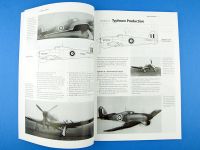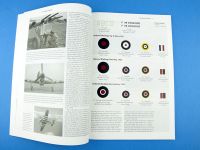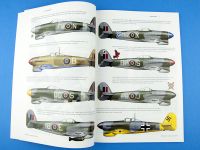Valiant Wings Publishing | Airframe & Miniature No. 2: The Hawker Typhoon (Second Edition)
Reviewed by Kevin Futter
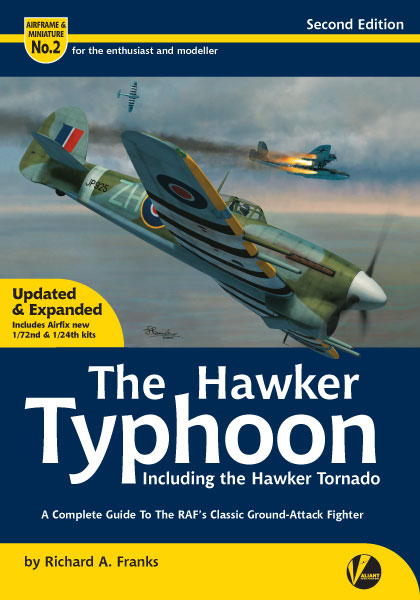
This latest in the Airframe & Miniature series from Valiant Wings Publishing is actually a second edition reprint of No. 2 in the series, The Hawker Typhoon: A Complete Guide to the RAF's Classic Ground-Attack Fighter. Written as usual by Richard Franks, it tells the tale of the Hawker Typhoon, and its Tornado progenitor, over 176 luxurious pages.
The book is divided into two main sections, Airframe Chapters and Miniature Chapters, each of which has a number of sub-sections.
Airframe Chapters
- Evolution - Tornado
- Evolution - Typhoon
- Typhoon Production Variants
- Drawing-Board Projects
- Camouflage & Markings
- Survivor
- Color Profiles
Miniature Chapters
- Hawker Typhoon Kits
- Building a Selection
- Building a Collection
- In Detail: The Hawker Typhoon
There is also a list of Appendices:
- Tornado & Typhoon Kit List
- Tornado & Typhoon Accessory List
- Typhoon Decal List
- Tornado & Typhoon Production
- Bibliography
The last part of the book features an insert of a set of fold-out plans in 1/48 scale.
The Airframe Section
The Airframe section starts off with a four-chapter summary of each variant produced, from the initial Tornado prototypes through the to final production Typhoons, and the initial Tempest prototypes. This is a very handy primer on not only the sequence in which the variants were produced, but the defining differences between them. Each variant is illustrated with a port-side profile, neatly rendered in black, white, and grey.
Chapter 5 kicks off a discussion of Typhoon camouflage and markings, including breakdowns of the different styles of national insignia and squadron codes used.
Chapter 6 details the interesting history of the last complete surviving Typhoon, built during 1944 and currently on display at the Canada Aviation and Space Museum in Ottawa. A brief list of other Typhoon sections and replicas is also included.
Page 44 kicks off a seven-page section of colour profiles. These are by Richard Caruana, and are gorgeous, taking full advantage of the quality glossy paper used throughout.
The Miniature Section
This section is introduced with chapter 7, a detailed look at applicable Typhoon kits. All the major scales are covered, from 1/72 to 1/24, though the Crown (now Revell) 1/144 kit is not mentioned (though it, along with other oddities, is mentioned in Appendix I). The Airfix 1/24 Typhoon kit has been included as part of the second edition update. In 1/32 scale, the MDC and Revell kits are looked at in some detail.
Chapter 8, "Building a Selection", features a number of kit builds in 1/72, 1/48, 1/32 and 1/24:
- Academy 1/72 Typhoon Mk Ib - Libor Jekl
- Airfix 1/72 Typhoon Mk Ib - Steve A. Evans
- Brengun 1/72 Typhoon Mk Ib (Late Production) - Steve A. Evans
- Czechmaster Resin 1/72 Typhoon Prototype/Mk Ia - Libor Jekl
- Hasegawa 1/48 Typhoon Mk Ib - Steve A. Evans
- MDC 1/32 Typhoon Mk Ib - Steve A. Evans
- Airfix 1/24 Typhoon Mk Ib - Dani Zamarbide
Each build article varies in the amount of detail it provides about the build itself, but the resultant models are uniformly excellent. If I had to quibble, I feel the Dark Green used on the Airfix 1/72 build by Steve Evans is too bright, and some of the weathering effects employed by Dani Zamarbide on the same company's 1/24 scale kit are a bit overdone for my tastes. These assessments are of course both subjective and personal, and in no way detract from either the build articles concerned or the models they depict.
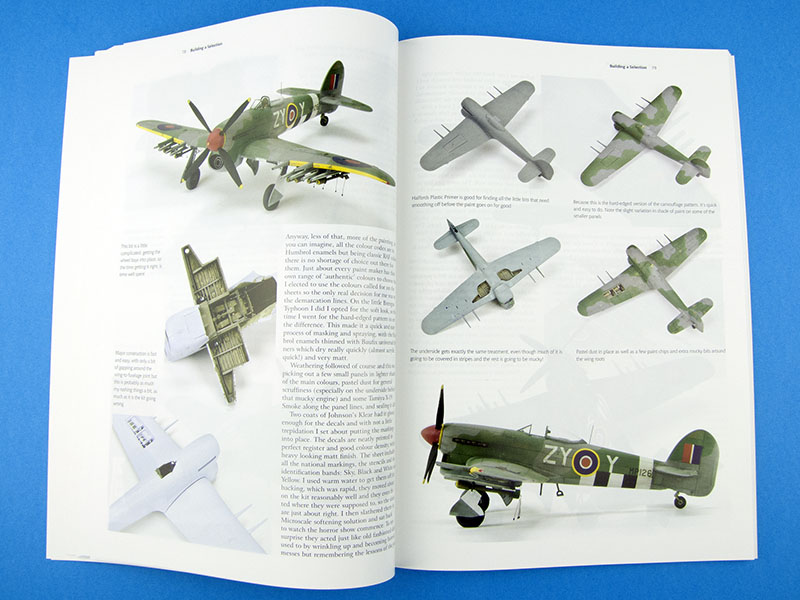
One of the most interesting sections to me is chapter 9, "Building a Collection". Through a series of isometric 3-D drawings by Jacek Jackiewicz, this section illustrates the pertinent features of each revision of the airframe as it progressed through its development. When combined with the information presented in the first part of the Airframe section, it becomes a simple matter to understand the features present on any particular variant or sub-variant. In fact, this section could easily have been included in the Airframe portion of the book, rather than the Miniature section.
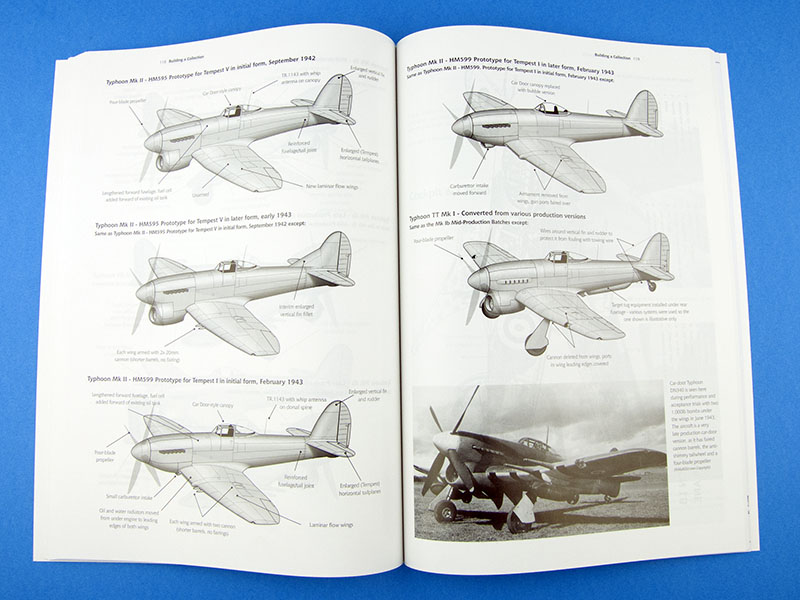
Chapter 10, "In Detail", features a series of close-up photographs and technical drawings to reveal those airframe details so often sought after by modellers. Many of the photographs are of restored airframes, so the usual caveats regarding those apply here, but they're useful nonetheless.
Included in this chapter is an interesting section about the debate surrounding the shape of the cowling on late-model Typhoons. There has been some conjecture that this shape was revised to resemble that seen on the Tempest V. I won't give away the author's conclusions, but it makes for an interesting read.
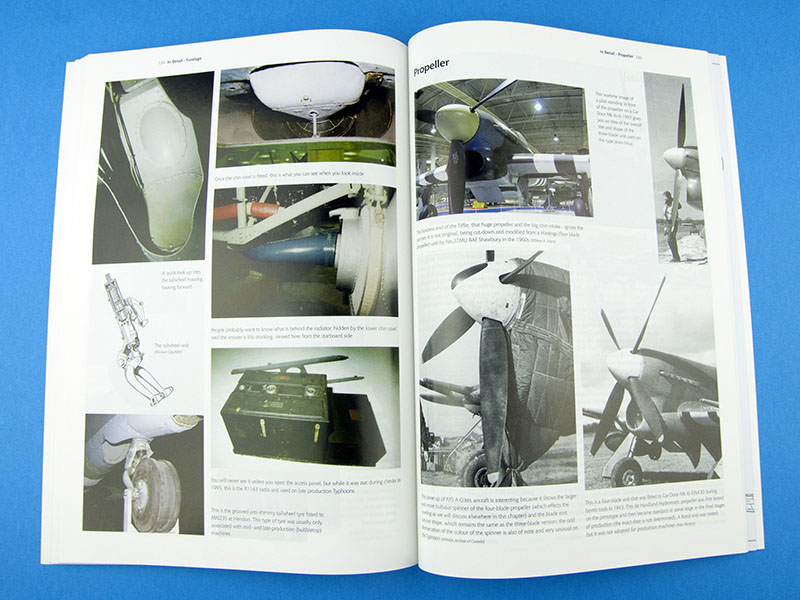
Scale Plans
The final component of the book is a set of fold-out scale plans in 1/48 scale. These are printed on a heavy plain stock, and have been drawn by Jacek Jackiewicz. The airframes featured are, predictably enough:
- Tyhpoon Ib Bubble-top
- Tyhpoon Ib Car Door
Both sets of plans include fuselage cross-sections. The plans themselves are very nicely drawn, with complete panel line and rivetting detail. My only complaint is that their fold-out nature makes them awkward to work with, and there's no convenient way of removing them from the book for separate study. Perhaps making them either easily detachable (perforated attachments?) or a separate insert might solve this problem, but it might also drive up costs and complicate production. In any case, they're still a most welcome and worthwhile inclusion.
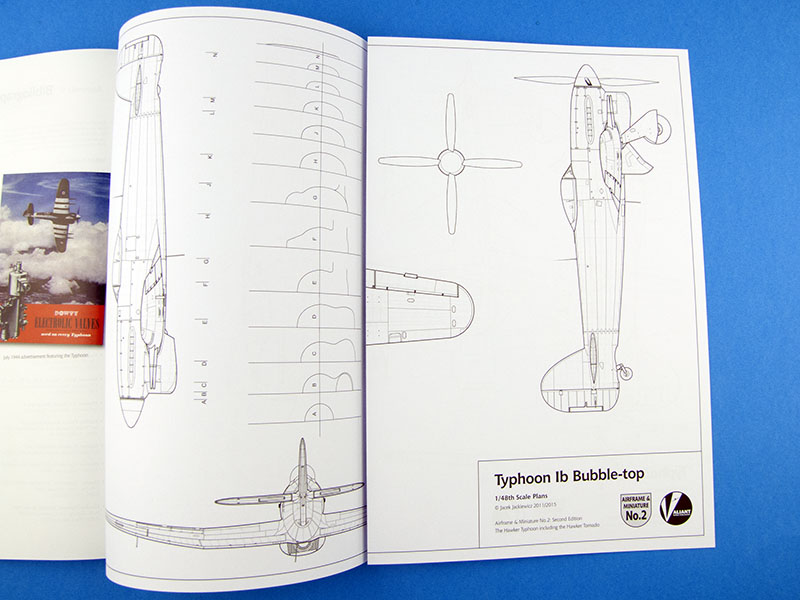
Conclusion
While I can't vouch for the accuracy of any of the included content in this title, it does at first glance appear to be exhaustively researched. The production values are first class, and the contents explore the book's stated remit—airframe and miniature—in extensive detail. There are certainly fewer typos than I've noticed in previous releases, which is good to see, but the author still suffers from the persistent habit of using a question mark to end statements he's uncertain about, rather than rephrasing the sentence as an actual question.
Minor grammatical niggles aside, this volume is packed with a wealth of information and detail about the Hawker Typhoon, is lavishly produced, and should serve as a handy one-stop reference for the type. Recommended!
Kevin Williams has written a review of the first edition.
Thanks to Valiant Wings Publishing for the review sample.
© Kevin Futter 2015
This review was published on Monday, November 23 2015; Last modified on Monday, February 29 2016

